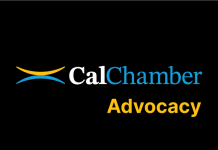In this episode of The Workplace podcast, CalChamber Executive Vice President and General Counsel Erika Frank, and employment law expert Jennifer Shaw discuss key points, misconceptions and liabilities employers need to be aware of concerning the federal Worker Adjustment and Retraining Notification (WARN) Act and California’s equivalent, Cal-WARN.
Key Points for Employers
The WARN Act and the Cal-WARN Act are laws for when employers need to do a mass layoff or a closure of a location, Shaw says.
The federal WARN Act and the California WARN Act are two separate laws that provide for different things, Shaw adds. For example, a temporary layoff or a furlough can activate the California WARN, but usually not the federal act.
These are two relatively unknown laws that can really get many employers in trouble, Shaw says. Each have specific requirements, definitional issues and boxes to check.
“The big picture… is if you’re talking about closing a facility or you’ve got 75 people at a location and you’re… laying off 50 of them or even 25 of them… you need some counsel,” Shaw says.
While there are exceptions, for example for a physical calamity or “act of God,” these exceptions haven’t been litigated and it is unclear what would meet the exceptions, Shaw adds.
Misconceptions
Three significant misconceptions employers face about the WARN Act are the following, Shaw says.
• “Everyone already knows what is going on with unemployment crisis due to the COVID-19 pandemic.”
• “Assuming you only have to tell your employees.” Employers also need to give notice to their local public entities: the board, the employment development department and retraining organizations.
• “Unemployed people are not going to care about the WARN Act because they’re already getting unemployment benefits.” Plaintiff lawyers care about the California WARN Act, Shaw stresses. Employers shouldn’t assume they are not going to get a claim because someone is in unemployment, that is not the same as being employed for an additional 60 days receiving benefits.
The bottom line is whether you’re hiring or firing, performance based or not, employers need to think about their process, Shaw explains. How are you making and documenting these decisions and how do you prove you made a legitimate decision?
Liabilities for a Misstep
Both the federal WARN Act and the Cal-WARN Act have very specific requirements, many definitional issues, notices employers have to give to employees and special language, Shaw says.
If you are not issuing a notice correctly then there are very significant consequences, Shaw says. For example:
• Employers pay 60 days of wages and benefits. This means if an employee is on COBRA health insurance and has a heart attack when you, the employer, were supposed to be covering them then the heart attack is now covered by your insurance.
• Penalties and attorney fees.
• Employers are subject to a class action treatment or a Private Attorneys General Act (PAGA) claim because the Cal-WARN is in the labor code.
Now that we have more guidance on these laws, the leniency will not be there as much in the future, Frank cautions.
It’s not going work if a month from now you are arguing that you didn’t know you had to give notice, Shaw adds.


